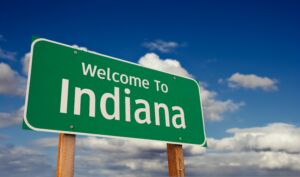 The MASH 16 TL-3 and TL-4 compliant HighwayGuard™ steel barrier system has been approved for use by the state of Indiana, enabling its use as either a temporary or permanent steel barrier system in standard (SDS), low (LDS) and minimum (MDS) configurations.
The MASH 16 TL-3 and TL-4 compliant HighwayGuard™ steel barrier system has been approved for use by the state of Indiana, enabling its use as either a temporary or permanent steel barrier system in standard (SDS), low (LDS) and minimum (MDS) configurations.
This latest approval continues the growth of HighwayGuard™ as a road safety system of choice across the USA and Canada, providing a versatile solution to protect road workers as they carry out improvement and maintenance projects and vehicle occupants in the event of a collision. With symmetrical barrier lengths and an innovative, patented T-connector for rapid connection and disconnection, HighwayGuard™ provides a practical barrier system that can be deployed in virtually any environment.
Indiana, often referred to as the “Crossroads of America” due to its extensive highway and transportation infrastructure that connects major cities and states, has more intersecting roads than any other state in the US. It is home to the Indianapolis 500, one of the most famous racing events in the world as well as major interstates, including I-65, I-70, and I-80, which serve as key freight and commuter corridors. Safety is of high priority for the Indiana Department of Transportation (INDOT), which continues to focus on reducing risks for both road workers and drivers, especially with the rise in distracted driving incidents and work zone collisions.
The approval of HighwayGuard™ for use in Indiana aligns with the state’s ongoing efforts to enhance road safety while ensuring that contractors have access to a barrier system that is quick and easy to deploy. With integrated anchoring and minimal componentry, HighwayGuard™ offers fast installation, greater versatility in barrier length configuration, and a narrow profile – with section widths as small as 0.25m up to a maximum of 0.54m – helping to maximise work areas while minimising traffic disruption.
The increasing use of HighwayGuar™ across the USA continues its momentum across global territories worldwide, including Canada, Australia, and New Zealand.
